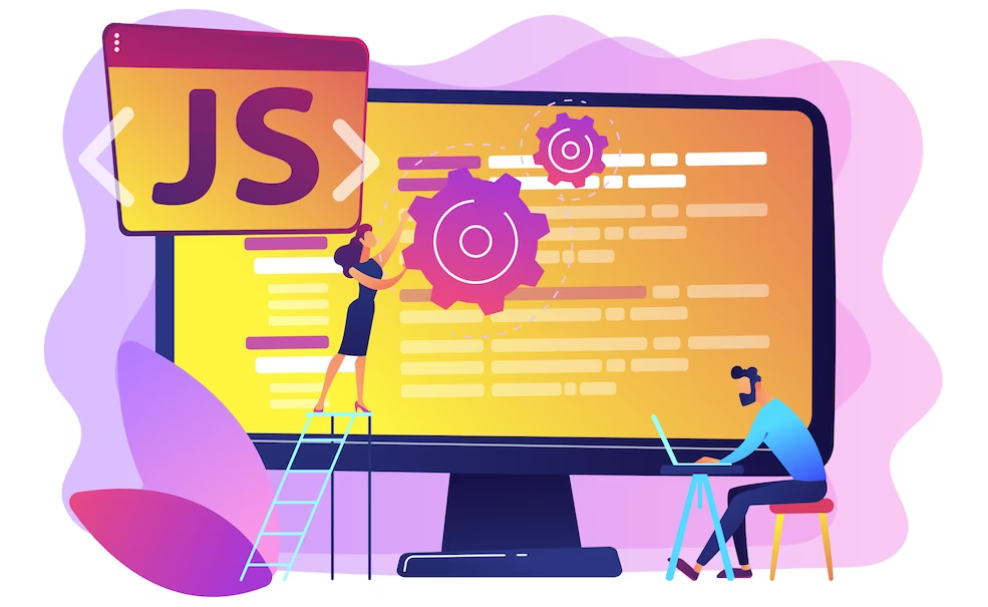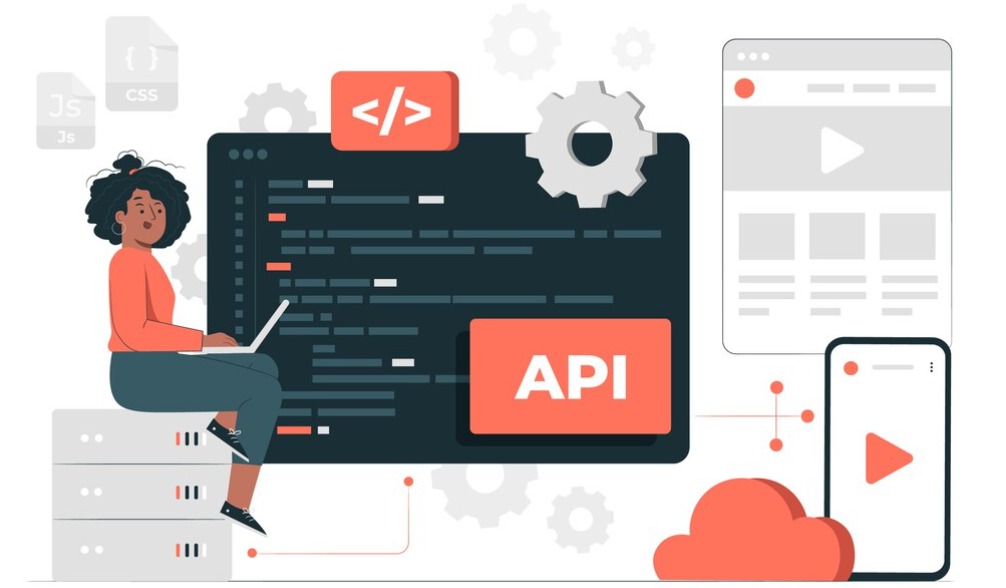Tired of the endless loop of learning HTML, CSS, and JavaScript? You’re not alone. Many aspiring web developers get stuck in this cycle, overwhelmed by the vast amount of information and unsure of the right path. This guide cuts through the confusion, offering a clear roadmap to help you land your first web development job efficiently.
Frontend Web Developer vs. Backend Web Developer
Before we dive into the nitty-gritty, let’s get one thing straight: web development has two main flavors—frontend and backend.
Frontend Web Developer: Crafting User Experiences
Frontend web developers are the architects behind what users see and interact with on websites. They use HTML, CSS, and JavaScript to bring designs to life and create seamless user experiences.
Backend Web Developer: Powering the Magic Behind the Scenes
Meanwhile, backend web developers work their magic behind the scenes, handling data management, server-side logic, and APIs. It’s like the engine room of a ship—essential but often hidden from view.
Front-End Development: Where Users See and Interact
Front-end developers are the architects of the user experience, crafting the visual elements and interactive features that users directly encounter. Imagine a restaurant – the front-end is the welcoming dining area, where guests experience the ambiance and interact with the staff.

Mastering the Essentials: HTML, CSS, and JavaScript – But Not for Too Long
Yes, HTML, CSS, and JavaScript are the foundational building blocks of front-end development. But don’t get bogged down in mastering every minute detail. Instead, focus on acquiring the top 20% of concepts that cover 80% of use cases. This means understanding the core functionalities of each language:
- HTML: Think of HTML as the blueprint of your website. It defines the structure and content, specifying elements like headings, paragraphs, images, and forms. Resources like W3Schools offer excellent tutorials and interactive exercises to get you started.
- CSS: Now comes the styling. CSS is like the interior designer of your website, controlling the visual appearance of elements like color, font, layout, and animation. Mastering CSS allows you to create aesthetically pleasing and user-friendly interfaces.
- JavaScript: Finally, JavaScript brings your web pages to life with interactivity. It adds dynamic behavior, allowing users to interact with elements, submit forms, and see content updates without refreshing the entire page. Think of it as the electrician installing smart features in your website.
Remember, the learning journey doesn’t stop here. You’ll continue to refine your understanding of these core languages as you tackle more complex projects.
Embrace Frameworks: Supercharge Your Workflow
As you delve deeper into front-end development, you’ll encounter repetitive tasks like styling elements and managing layouts. This is where frameworks come in handy. They provide pre-written code for common styles and functionalities, saving you time and effort.
- Tailwind CSS: This utility-first framework provides a collection of low-level CSS classes that you can directly apply to your HTML elements. It’s known for its simplicity and ease of learning, making it a great choice for beginners. Explore the Tailwind Playground and documentation to get comfortable with its syntax and components.
React: The JavaScript Powerhouse for Dynamic Interfaces
For building complex and interactive user interfaces, React is a popular choice. It leverages a component-based approach, breaking down interfaces into reusable and manageable pieces. Additionally, React’s virtual DOM ensures efficient updates, only rendering changes on the screen instead of reloading the entire page.
- Official React Documentation: The official documentation is an excellent resource for getting started with React. It covers fundamental concepts, practical examples, and even a walkthrough of building a Tic Tac Toe game using React.
- Learn React Section: This highly recommended section delves deeper into React’s concepts and best practices. It’s an invaluable resource for solidifying your understanding and becoming proficient in React development.
From Basics to Projects: Bridge the Gap with Real-World Practice
Now comes the crucial part: putting your knowledge into action. While theoretical understanding is important, practical application is essential for solidifying your skills and showcasing your abilities to potential employers. Here are some ways to bridge the gap:
- Follow Along with YouTube Tutorials: Find tutorials that guide you through building real-world applications like popular app clones (e.g., Netflix or Amazon). This immersive learning approach exposes you to practical challenges, new technologies like Next.js (a React framework for features like server-side rendering), and industry best practices.
Craft Your Own Project: The Instagram Challenge
Building your own projects is an excellent way to solidify your learning, challenge yourself, and showcase your capabilities. Here’s an engaging project idea:
Build a Basic Version of Instagram: Start with core functionalities like photo sharing, news feed displaying friends’ photos, and liking photos.
Later, you can add more advanced features like:
- Commenting on photos: Allow users to leave comments on other users’ photos, fostering interaction and community engagement.
- Following users: Implement a follow system where users can subscribe to other users’ feeds, ensuring they see their latest updates.
- Direct messaging: Enable private messaging between users for more personal communication.
- Searching for users and photos: Allow users to search for specific users or photos based on keywords or hashtags.
- Notifications: Notify users about new likes, comments, and messages to keep them engaged.
Remember, this is a simplified version, so focus on the core functionalities first. As you progress, you can gradually add more complexity and features.

Back-End Development: Where the Magic Happens
While the front-end is all about the user experience, the back-end web developer handles the behind-the-scenes magic. This is where data is stored, processed, and delivered to the front-end. While some might advocate for full-stack development (mastering both front-end and back-end), consider testing the waters with front-end roles first. Gaining real-world experience and a steady income can boost your confidence and allow you to learn back-end development at your own pace.
JavaScript Goes Back-End: Introducing Node.js
Since you’re already familiar with JavaScript, transitioning to back-end development becomes smoother. Node.js bridges the gap by allowing you to run JavaScript on the server-side, eliminating the need to learn a new language entirely.
Express.js: Building APIs, the Restaurant’s Server
Remember the restaurant analogy from the beginning? Just like the server takes your order and delivers food, APIs (Application Programming Interfaces) act as the middlemen between the front-end and the back-end. Express.js is a popular JavaScript framework that simplifies building APIs, making data exchange efficient and organized.
Connecting the Dots: MongoDB and Mongoose
APIs need data to work, and that’s where databases come in. MongoDB is a popular NoSQL database known for its scalability and flexibility. Mongoose is a library that simplifies interacting with MongoDB from your Node.js application.
The Final Push to become a Successful Web Developer:
Now, it’s time to revisit your Instagram project and take it to the next level. Implement the back-end functionalities you skipped earlier:
- Store user data: Create a database to store user information like usernames, profiles, and photos.
- Enable photo uploads: Allow users to upload their photos and store them securely on the server.
- Implement user authentication: Secure your app by requiring users to log in or register before accessing features.
- Build the back-end for the news feed: Retrieve and display photos from users followed by the current user, ensuring proper data fetching and organization.
Remember, this is just a basic outline. There are many nuances and technical details involved in each step. Utilize online resources, tutorials, and communities to fill in the gaps and troubleshoot any challenges.
Trust the Process: Avoid the Final Mistake
Many aspiring developers get discouraged and give up due to the perceived complexity and length of the learning journey. Remember, consistency and a growth mindset are key. Don’t skip steps, focus on understanding each concept, and celebrate your progress along the way. Even if it takes longer than expected, trust the process and you’ll eventually reach your goal.
This roadmap provides a comprehensive overview of the key steps involved in becoming a successful web developer in 2024. Remember, the journey is unique for everyone, so adapt, explore, and most importantly, enjoy the process of learning and creating!

